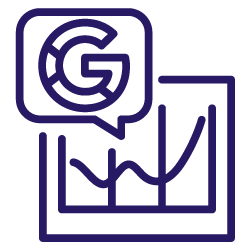The Knowledge Graph is a growing collection of interlinked descriptions of entities, encoding both objects and meanings, that Google uses to display certain rich results on SERPs.
Search Engines Results Pages are evolving in a way that they are now challenging SEO. Indeed, since the release of the Knowledge graph in 2012, your rankings have been losing some weight. With the introduction of universal search and the evolutions of the Knowledge Graph, you can find SERPs with only 15% of the page (up the floating line) presenting your snippets! Knowledge Graph and Adwords are taking a huge piece of cake.
Not convinced? Check this screenshot:
Why should you care about the evolutions of the Knowledge Graph?
First of all think of it as an opportunity. Google is trying to answer questions about your query, so if you analyze how Google behaves when answering, chances are that you can find a path to get more organic traffic. We will see how in a few seconds.
Then, you understand that the more the Knowledge Graph evolves, the smaller the part of Google SERPs that might send you visits will be. So in a lot of markets, Google vertical strategy will lead to a radical change for SEOs. If you don’t embrace this change, you might lose traffic but if you adapt your SEO strategy, you could add a lot of eyeballs to your metrics ;-)
A wise man adapts himself to circumstances, as water shapes itself to the vessel that contains it. –Chinese Proverb
First things first, let’s get back to Google technology.
Know the type of queries you want to rank on.
You need to understand how Google is interpreting the user’s queries.
(I need to say a big Thank You to Bill Slawsky, for his incredible work and research which are my daily dose of inspiration)
In a scientific paper published in 2007 —Determining the User Intent of Web Search Engine Queries— we began to find some clues about how Google might be categorizing the queries.
In this publication, the method presented determines three great categories that you could sum up:
- Navigational Searching
- queries containing company/business/organization/people names
- queries containing domains suffixes
- queries with “web” as the source
- queries length
- searcher viewing the first search engine results page
- …
- Transactional Searching
- queries containing terms related to movies, songs, lyrics, recipes, images, humor,…
- queries with “obtaining” terms (e.g., lyrics, recipes, etc.)
- queries with “download” terms
- queries related to image, audio, or video collections
- queries with “interact” terms (e.g., buy, chat, etc.)
- …
- Informational Searching
- uses question words (i.e., “ways to,” “how to,” “what is”, etc.)
- queries with natural language terms
- queries containing informational terms (e.g., list, playlist, etc.)
- queries that were beyond the first query submitted
- …
With these categories in mind, I am sure you begin to better understand how certain types of queries are treated by Google.
Now you need to keep in mind that Google bought Metaweb back in 2010 which represents the tipping point in terms of Knowledge Graph evolution. With this acquisition Google did not only acquire technologies and talent but also the knowledge of more than 40 millions of named entities, 650 millions of facts and more than 35,000 types of relations between facts and entities.
As a result, Google knows what you are talking about when you write an article about « Conan »:
At the same time, Google started using co-occurency as a ranking factor. Their algorithms are able to detect a context in which it encounters a particular term. For instance, it can understand which « Guiness » we are talking about based on the co-occurency of certain terms and by knowing the relations between entities:

In this case we see that « Guiness » is an ambiguous term, if it finds « beer » or « Arthur Guiness » on the page mentioning « Guiness », you are obviously talking about a beer brand. But if it finds « Movie » and « Star wars », chances are that you are talking about Alec Guiness (actor).
Between 2010 and 2012, the use of structured data such as Schema.org has helped Google build more comprehensive SERPs for certain queries or type of pages: recipes, reviews… This is a critical step, because using Schema.org helps Search Engines to spot with html tags what your pieces of content are all about. It’s a step ahead in better interoperating web contents.
The integration of Schema.org tags on your pages, will lead you to have Rich snippet in some cases and will help Search Engines interpret your content. That’s why at Oncrawl, we have released a deep analysis of your structured data integration.
These moves by Google based on Schema.org parsing helped to feed knowledge graph data bases.
And in 2012, they released the very first version of the Knowledge Graph. Finally, hummingbird Google has started using its knowledge about named entities into its ranking factors more precisely.
How to improve your SEO with the knowledge graph
By understanding the type of query you want to rank for, you can find some hot spots to increase your organic trafic. For instance, Google gives « instant answers » for informational queries. The bad news is that the layout of the SERPs reduces the place for your rankings, promoting the instant answer and associated questions. Check out this screenshot:

The good news is the website ranking in the instant answer is not the #1 result, it is the 9th! Being in the instant answer spot will drive between 50 and 75% of the traffic on the keyword according to several studies. So how could you be dominating this spot? I suggest you combine:
- Concise and ordered answers on your pages
- Use Schema.org markup
- Try to present your answer the closer you can to your H1 tag
- Having Trusted backlinks
So without having to be #1, you can drive a lot of traffic to your website.
I will also suggest that you integrate relations between the entities you have on your web pages to:
- build a semantic internal linking structure
- use the correct schema.org markup to help Google understand what entities you have
How to do that? Simply download all trusted ressources out there:
But keep in mind that if you have duplicated content on your website, Google will lower the « quality score » of your website, and thus might not rank you in the « instant answer » spot. If you have experience in knowledge graph optimizing, please give us feedback in the comments.




